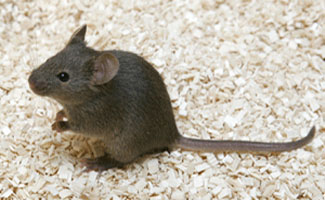UAB researchers first to clone mice in Spain

All three mice were or are being suckled with other non-clones and their growth parameters are within normal range, say researchers who were in charge of cloning the mice, Nuno Costa-Borges, Josep Santaló and Elena Ibáñez from the Department of Cell Biology, Physiology and Immunology at UAB.
In order to clone the animals, researchers collected oocytes and surrounding cumulus cells from several female mice. The chromosomes were extracted from each of the oocytes and substituted with a cell from the cumulus by cytoplasm injection. Once the oocytes had been reconstructed, they were activated by simulating the stimuli occurring during fecundation so as to induce embryonic development. The cloned embryos were later transferred to receptor females.
The mice obtained by researchers at UAB, in addition to being the first of their species cloned in Spain, are the first animals to survive at birth and develop correctly. In 2003, Spanish scientists were able to clone a female Pyrenean mountain goat using a cell from the last animal of this species, which became extinct in 2000. The cloned animal however died 10 minutes after it was born due to a severe lung defect.
Increase in the efficiency of the cloning process
The cloning of the mice forms part of a research which scientists at UAB are carrying out to discover new ways of improving the efficiency of the cloning process. Nuno Costa-Borges, Josep Santaló and Elena Ibáñez are studying whether the use of valproic acid could contribute to an increase in the success rate of nuclear transfer cloning, currently situated at approximately 1% for mice using standard procedures.
Valproic acid is an inhibitor of the enzyme histone deacetylase, located at the cell nucleus where the DNA is found. Research carried out until now has shown that histone deacetylase inhibitors seem to contribute to an increase in levels of gene expression, which would favour the reprogramming of the somatic cell nucleus transferred to the oocyte cytoplasm. Its use in nuclear transfer processes however is very recent. It was first used two years ago and research until now has focused on trichostatin, an inhibitor which has significantly improved the efficiency of mouse cloning, raising it to 5%.
Studies carried out by researchers at UAB can not only be applied to reproductive cloning of animal models; they can also be used for the reprogramming of cells for therapeutic aims.
Costa-Borges, Santaló and Ibáñez are comparing three groups of cloned embryos in their research: valproic acid in the first group, trichostatin in the second and no inhibiting substance in the third group. The three mice in this case were cloned using the first (Cloe and Clona) and second (Cleo) inhibitors. In vitro experiments already pointed to improvements in the development of cloned embryos using inhibitors. However, scientists must wait until the end of the in vivo test period in July to obtain more conclusive data.


